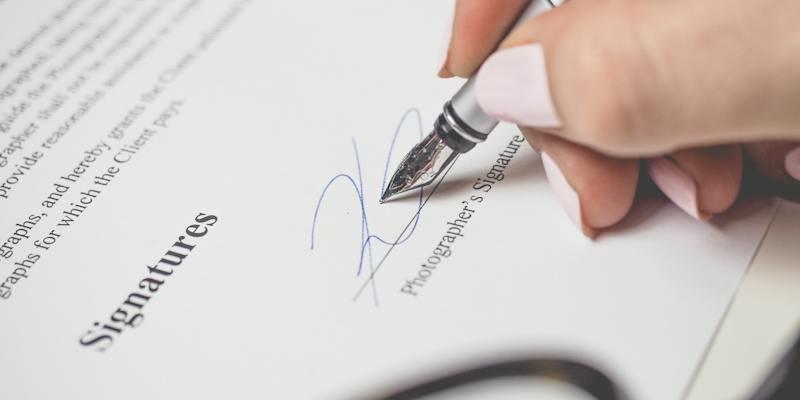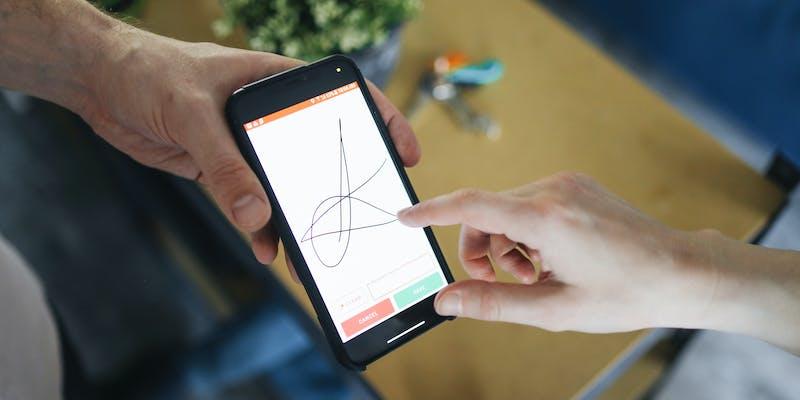Check-Writing 101: An Easy Guide to Filling Out Checks Correctly
Dec 10, 2023 By Susan Kelly
Although less common in our digital age, paper checks are still a popular and cost-effective financial transaction. Many don't write checks regularly, so learning how is simple and essential. This step-by-step guide helps you explore each level. You can follow the steps sequentially or use the example to write a check.
Selecting Smart Payment Methods
Before pulling out your checkbook, consider a more efficient and cost-effective financial management strategy. Although conventional, writing a check can be time-consuming. Explore alternatives that simplify and increase convenience.
Accept Online Payments
Pay bills online for convenience. Avoid writing checks, paying postage, and worrying about postal delivery by setting up recurring monthly transactions and write a check online.
Autopay Regularly
Automate utility and insurance payments to simplify life. This easy solution usually costs nothing and covers your bills. Maintain sufficient cash in your account to avoid issues.
Fund Adequately
Keep your bank account well-funded regardless of payment method. Insufficient money might cause bounced payments, which incur fines and hassles.
Selecting the correct payment method provides financial security and a smooth, stress-free transaction in a world of changing payment possibilities.
Filling A Check
Filling out a check is essential for managing one's money and guaranteeing precise and safe transactions. To make a perfect check, adhere to these exacting steps:
The Date
The current date should be in the very top right corner. You and the receiver will both benefit from this timestamp when keeping records. It is common practice to use the current date on checks, but there may be issues if you want to postdate to write a check for a future transaction.
Payee Details
In the "Pay to the order of" section, you should write the exact name of the person or business receiving your money. Precision is critical, so feel free to ask questions if you're unsure. This data is crucial to the validity of the check.
Amount In Numbers
Write the payment amount numerically in the little box on the right side. To avoid manipulation, start as near the left boundary as possible. For example, if the amount is $8.15, you may increase security by tightly aligning the "8" against the left boundary.
Amount In Words
To avoid confusion and fraud, write out the whole payment amount. If there are any inconsistencies between the written and numerical forms, the written form will be considered more authoritative. To make it more secure, use all capital letters.
Signature

Pitch your readable signature in the space provided in the lower right corner. Be careful that your name and signature match your bank records. Without this crucial endorsement, a check is not legitimate.
Memo
Even though it's not required, you can use the memo line to provide relevant remarks. To help the payee handle your payment, you can use it to offer reminders or additional information. For example, when paying the IRS or your energy bills, you must provide your Social Security number.
A trusting financial transaction is assured when all sections are filled out accurately and securely. This applies to both the payer and the payee. To become an expert with this ageless payment method and sharpen your financial sense, practice this skill often.
Recording Check Transactions
After using the proper way to write a check, immediately record it in your electronic or paper check register. This prevents accidentally spending the exact amounts twice, as the available balance may not reflect the deduction until the check is completed. Remember the payment information while it's fresh.
- Utilize a check register to track spending, avoiding the risk of bounced checks.
- Enhance financial awareness by recording transaction details not always provided in bank statements.
- Safeguard against fraud and identity theft by maintaining a comprehensive record of your checking account activity.
Ensure your check register includes the following:
- Check number
- Date of the transaction
- Description of the payee or transaction
- Amount of the payment
Create a paper or spreadsheet to write a check register if you don't have one. The DIY method provides orderly and precise financial tracking. The check register helps balance your checking account by double-checking transactions against the bank statement. This checks for irregularities and accurately displays your cash. After writing a check, assume the money is removed, significantly if computerized processing speeds up the withdrawal. The check register provides real-time financial information.
Security Tips
Ensuring check transaction security goes beyond writing an amount and payee name. Security is essential because thieves exploit check-writing weaknesses. Check-writing should be done using a pen, not a pencil. Ink is permanent, so the amount and payee stay unaltered. Avoid signing a check before entering the payee and amount.
This precaution prevents unauthorized access to your checking account and protects against abuse if the check is lost or stolen.
To prevent scammers from adding extra digits to your check, write the dollar amount to the far left and draw a line after the final numeral.
Checkbooks with carbon copies give a paper trail of transactions, making it easier to track your money and assuring financial transparency. Developing a regular and legible check signature helps spot fraud while eliminating cash checks and using electronic payments increases security. These steps make check-writing secure and robust, giving you peace of mind in the ever-changing financial world.
Depositing A Check

Depositing the check is a straightforward process with several convenient options:
In-Person Deposit
- Head to your local bank branch and approach a bank teller.
- Endorse the check by signing the back.
- Present the endorsed check to the teller, specify your deposit preference, or complete a deposit slip.
- Check your driver's license.
ATM Deposit
- Locate a bank or credit union ATM that accommodates check deposits.
- Endorse the check by signing the back.
- Depending on the ATM, you may need to use an envelope for the deposit.
Mobile Check Deposit
- Utilize your bank's mobile banking app for a convenient deposit.
- Choose the specific bank account for the deposit.
- Enter the check amount and take a clear photo of the front and back.
- Hold onto the physical check until the funds are confirmed in your account.
- Once the check has cleared, it's advisable to destroy it securely.








